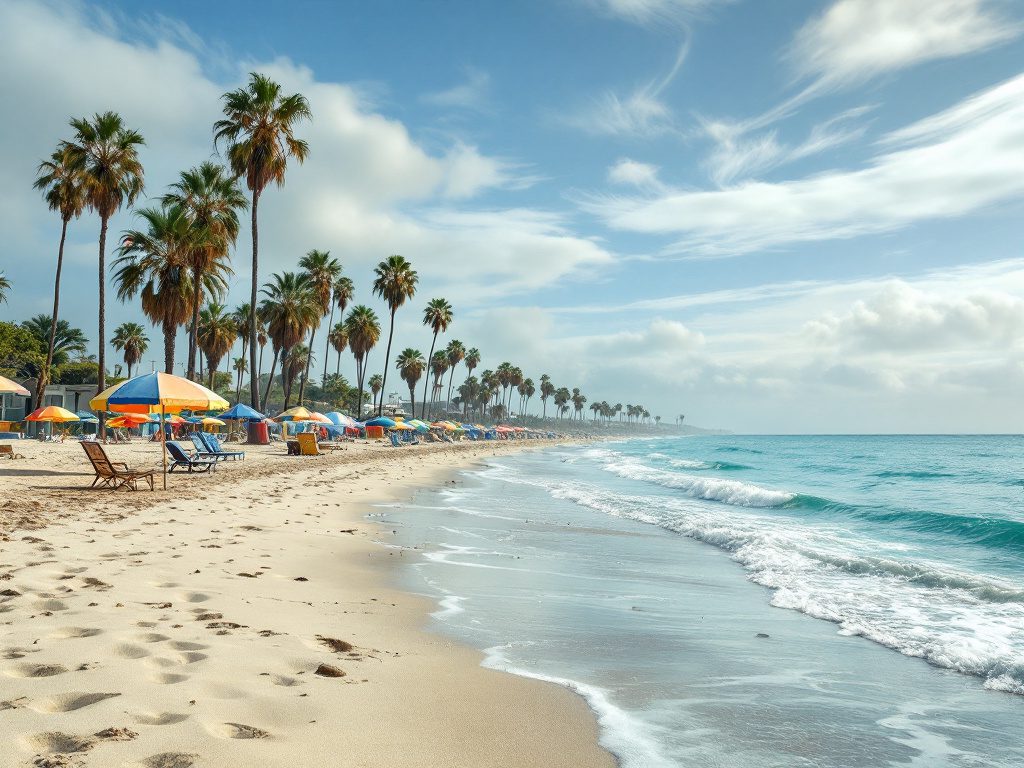The Golden State’s Troubling New Reality
Sun-soaked vistas, iconic coastlines, pulsating cities—California has long been the nation’s beacon for international travelers. Yet, as the hospitality industry tallied the receipts from a record-setting 2024, troubling clouds have gathered on the horizon. For the first time since the pandemic brought the world to a standstill, California’s tourism sector faces a year-over-year decline, driven by the ripple effects of federal policies and growing unease abroad.
The state’s own forecasts paint a stark picture: Overall tourist numbers are expected to dip by 0.7% this year, with a staggering projected 9% drop in international visitors. Behind those percentages lies a simple fact: millions fewer choosing to spend their dollars in the world’s fifth-largest economy—all while airlines like those serving Los Angeles International Airport slash 300,000 seats due to plummeting bookings from crucial feeder markets such as Canada, where early 2025 saw declines soaring past 70%.
What’s driving this swift reversal of fortune? According to Governor Gavin Newsom, much of the blame lies at the feet of Donald Trump-era federal policies, which have continued to cast a long shadow over America’s global reputation. “The Trump administration’s policies are already killing tourism jobs while driving away tourists,” Newsom emphasized this spring. His concern is not misplaced. The immediate fallout is visible in both updated travel advisories and in cold, hard data: destinations up and down the state are bracing for a contraction that could cost billions in lost revenue and threaten thousands of jobs in hospitality and related industries.
Travel Advisories and International Distrust
It would be a mistake to view this downturn as simply a cyclical dip. In reality, publicized incidents at U.S. borders and airports—from high-profile deportations to detainments of foreign travelers—have stoked fear and resentment among would-be visitors. These are not anecdotes confined to the Twitter feeds of activists; instead, they’ve been captured in official pronouncements by foreign governments. Countries like Canada and Mexico have updated warnings to their citizens, urging greater caution or consideration before booking a California getaway.
Tourism, often seen as immune to the ebbs and flows of geopolitics, is now squarely caught in the crossfire of cultural and diplomatic tensions. The costs are hitting hardest not just in famous cities like San Francisco and Los Angeles, but in small towns that depend on out-of-town dollars for local jobs and tax revenue. In 2024, visitor spending reached a historic peak—rising 3% year-over-year to $157.3 billion—enriching nearly every region. Fifty of California’s 58 counties saw benefits. Now, Visit California President Caroline Beteta issues a warning: the forecasts do not even account for a potential U.S. recession. Should the broader economy falter, the situation could worsen dramatically.
“Tourism, often regarded as recession-proof, becomes a casualty when a nation’s global image suffers. This is not a minor hiccup—it’s the direct outcome of policy choices and rhetoric from Washington.”
A closer look reveals Canadian travelers—a group that contributed nearly $3.72 billion in 2024—are among those bailing at record rates. The economic significance cannot be overstated. As even U.S. Commerce Department officials acknowledge, international tourism is one of America’s most vital exports, routinely offsetting trade imbalances and supporting over a million California jobs last year alone.
Battling Back: Can California Overcome Federal Headwinds?
Beyond visitor numbers and lost revenue, California’s response epitomizes the classic progressive battle: defending local values—and livelihoods—against harmful federal overreach. The state seems determined not to stand idly by. Led by Governor Newsom, officials have rolled out new marketing initiatives, targeting markets like Canada with the message that California’s doors (and sun-soaked beaches) are open, welcoming, and, above all, safe.
Will such efforts be enough? If history offers any lessons, proactive outreach can stem the bleeding—for a time. After 9/11, for instance, U.S. tourism rebounded thanks in part to high-level diplomatic engagement and a softening of visa restrictions, ultimately restoring confidence among global travelers (Brookings Institution, 2007). However, the current situation is complicated by enduring polarization, as Trump-era immigration policy and rhetoric left scar tissue on America’s image that simple marketing may not quickly heal. International travelers now weigh not just their destination but the risk of encountering hostility or bureaucratic snares at every step of their journey.
Harvard economist Alicia Garcia-Herrero stresses the role of national hospitality in global travel demand. “When travelers perceive a country as unwelcoming—regardless of actual risk—they change their plans. Recovery, once trust is compromised, takes much longer than anyone predicts.” The numbers bear this out: according to Pew Research, global favorability toward the U.S. plunged during Trump’s tenure and has only slowly begun to recover.
What does this mean for ordinary Californians and the progressive project as a whole? The answer lies in resilience and recommitment. California’s strength has always been diversity, openness, and a drive to welcome the world’s best and brightest. While federal missteps threaten to stall this engine of prosperity, the state’s refusal to retreat—embracing bold strategies, championing inclusion, and doubling down on its identity as a global beacon—offers hope that the world isn’t ready to turn its back on California just yet.

